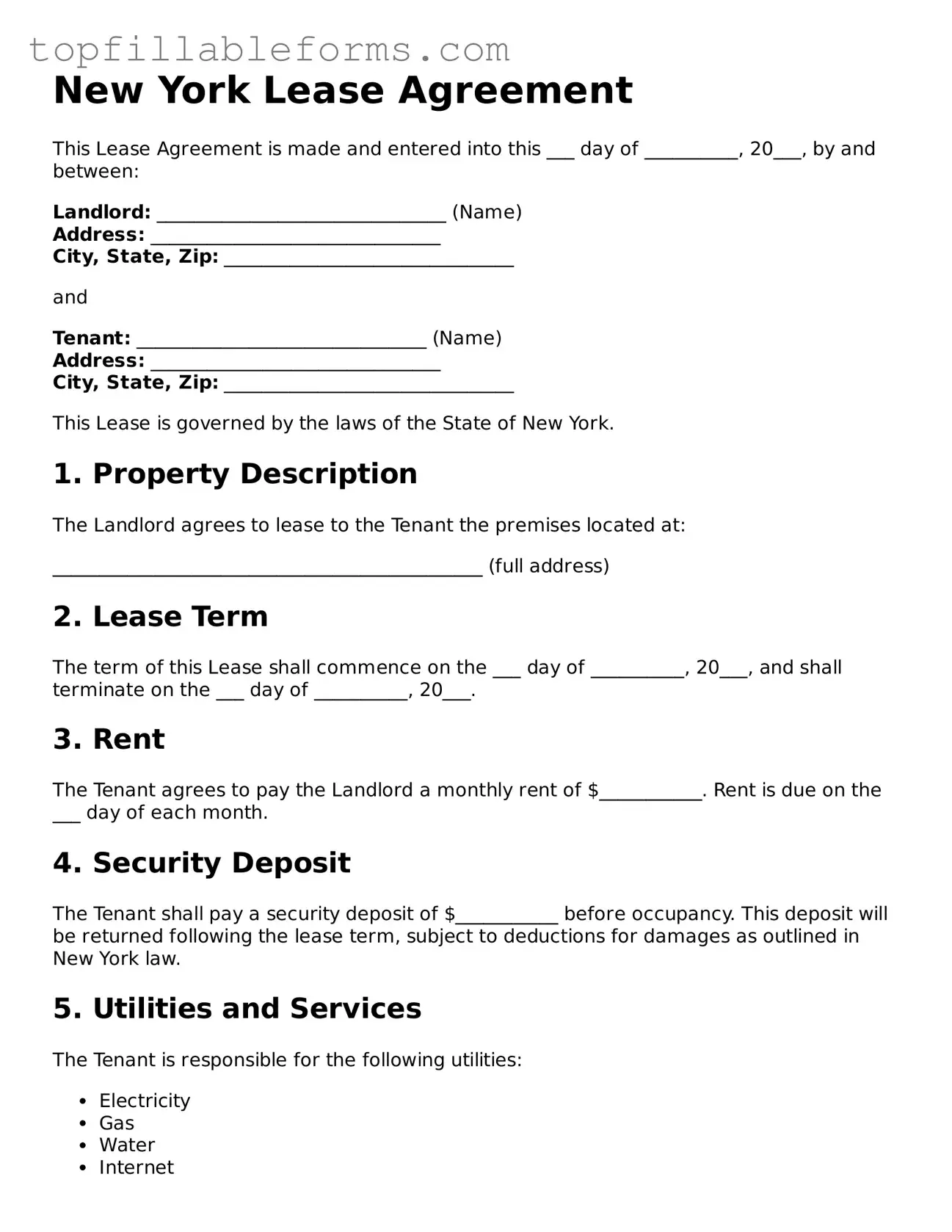New York Lease Agreement
This Lease Agreement is made and entered into this ___ day of __________, 20___, by and between:
Landlord: _______________________________ (Name)
Address: _______________________________
City, State, Zip: _______________________________
and
Tenant: _______________________________ (Name)
Address: _______________________________
City, State, Zip: _______________________________
This Lease is governed by the laws of the State of New York.
1. Property Description
The Landlord agrees to lease to the Tenant the premises located at:
______________________________________________ (full address)
2. Lease Term
The term of this Lease shall commence on the ___ day of __________, 20___, and shall terminate on the ___ day of __________, 20___.
3. Rent
The Tenant agrees to pay the Landlord a monthly rent of $___________. Rent is due on the ___ day of each month.
4. Security Deposit
The Tenant shall pay a security deposit of $___________ before occupancy. This deposit will be returned following the lease term, subject to deductions for damages as outlined in New York law.
5. Utilities and Services
The Tenant is responsible for the following utilities:
- Electricity
- Gas
- Water
- Internet
- Trash Removal
6. Use of Premises
The premises shall be used and occupied solely by the Tenant and their immediate family. Unauthorized guests or subletting is prohibited without prior written consent from the Landlord.
7. Maintenance and Repairs
The Tenant agrees to maintain the premises in good condition. Any damages beyond normal wear and tear must be reported to the Landlord.
8. Pets
Pets are allowed / not allowed on the premises (select one). If allowed, additional terms apply: ________________________________________________________.
9. Termination
Upon expiration of the Lease, the Tenant shall vacate the premises. Early termination by the Tenant must follow the provisions outlined in New York law.
10. Signatures
By signing below, both parties agree to the terms outlined in this Lease Agreement.
Landlord Signature:_________________________ Date:_____________
Tenant Signature:__________________________ Date:_____________
This Lease Agreement is binding upon execution by both parties and constitutes the entire agreement between the parties.
